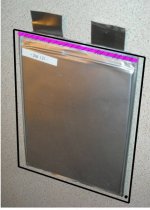dnmun
1 PW
now i wanna find compliant pads. i thought it was interesting how much the rate of charge affects capacity and aging.
they use the 3.60V as the maximum charged voltage but for all of us there has been an understanding from other sources like battery university that 3.65v was fully charged and then we learned from you last year about the lithium plating out above 3.60V.
do you know it the lower grade pouch cells such as the one li ping uses are subject to the same effects?
i would expect so but he would use a very high charger voltage for his packs to ensure that the packs would balance faster and when they became unbalanced.
ditto for the Vpower 18650 cells.
they use the 3.60V as the maximum charged voltage but for all of us there has been an understanding from other sources like battery university that 3.65v was fully charged and then we learned from you last year about the lithium plating out above 3.60V.
do you know it the lower grade pouch cells such as the one li ping uses are subject to the same effects?
i would expect so but he would use a very high charger voltage for his packs to ensure that the packs would balance faster and when they became unbalanced.
ditto for the Vpower 18650 cells.


